The National Trust says numbers of seal pup born on the islands have risen by 50% over five years.
Atlantic grey seal pup numbers at one of the largest colonies in England have reached record highs, the National Trust has said.
Counts by rangers on the Farne Islands, off the coast of Northumberland, have revealed numbers of youngsters born at the colony has risen by almost 50% over five years.

Video screencap
Some 2,602 pups have been counted this breeding season on the islands, up from 1,740 in 2014, with the healthy numbers thought to be down to a good supply of food for the seals and a lack of predators.
Seal pup numbers also hit record highs at the National Trust’s Blakeney Point in Norfolk, with 2,802 youngsters counted this year, compared to 2,000 in 2014.
Grey seals are protected mammals, with global numbers thought to be around 300,000, half of which live in British and Irish waters.

Rangers on the islands spray the pups to help keep an accurate count (Owen Humphreys/PA)
National Trust rangers who live on the Farne Islands for nine months a year survey the seals during the breeding season, which runs from late September to December with the majority of pups born in October and November.
Once the breeding season starts, pups are sprayed with a harmless vegetable dye to indicated the week they were born, with a rotation of three or four colours helping rangers keep track of numbers.
And for the first time, following a trial last year, rangers have also used a drone flying overhead as they undertake the spraying, to check against numbers gained on the ground, to make the count more accurate and less stressful for the seals.

Around half the 300,000 Atlantic grey seals in the world are found in British and Irish waters (Owen Humphreys/PA)
The drone has also allowed the rangers to see onto the smaller islands which are hard to land on in rough seas, the Trust said.
Ranger Thomas Hendry said: “We wait until the first pups are born and then begin the process of counting and marking all the pups born on the islands.
“A lack of predators and a plentiful supply of sand eels, which make up about 70% of the seals’ diet, has helped bolster our seal pup numbers.

For the first time this year, rangers have also used drones to help gauge seal numbers (Owen Humphreys/PA)
“This new record for the grey seal colony is certainly a milestone and could be good news for the health of our seas around the islands, indicating a good food supply due to fishing being limited partly due to several protected areas of sea around the islands.
“Over the next few years we will monitor the effect of a growing seal population and to manage the island habitats accordingly.”
As well as seeing a rise in numbers, the rangers on the Farne Islands say they have also seen changes to the breeding sites.
While more pups used to be born on the islands of North and South Wamses, now many seals try to breed on Brownsman and Staple islands, which are bigger and have higher ground, providing better protection from storms and high seas.
ORONO, Maine (AP) — The world’s largest 3D printer has created a house that can cut construction time and labor. An even larger printer unveiled on Tuesday may one day create entire neighborhoods.
The machine revealed Tuesday at the University of Maine is four times larger than the first one — commissioned less than five years ago — and capable of printing ever mightier objects. That includes scaling up its 3D-printed home technology using bio-based materials to eventually demonstrate how printed neighborhoods can offer an avenue to affordable housing to address homelessness in the region.
Thermoplastic polymers are extruded from a printer dubbed the “Factory of the Future 1.0." There could be even larger printers after the University of Maine breaks ground this summer on a new building, a spokesperson said.
The massive printer “opens up new research frontiers to integrate these collaborative robotics operations at a very large scale with new sensors, high-performance computing and artificial intelligence,” said Habib Dagher, director of UMaine’s Advanced Structures & Composite Center, where both of the printers are located.
Those attending the event included representatives from departments of defense, energy and housing, as well as other stakeholders who plan to utilize the new technologies made available by the printer. Heidi Shyu, under secretary of defense for research and engineering, said the printer "stands as a beacon of innovation."
The printer's frame fills up the large building in which it’s housed on the UMaine campus, and can print objects 96 feet long by 32 feet wide by 18 feet high (29 meters by 10 meters by 5.5 meters).
It has a voracious appetite, consuming as much as 500 pounds (227 kilograms) of material per hour.
The original printer, christened in 2019, was certified by Guinness World Records as the world’s largest polymer 3D printer, the university said. It was used to create a 600-square-foot, single-family home made of wood fiber and bio-resin materials that are recyclable. Dubbed “BioHome3D," it showed an ability to quickly produce homes. To meet the growing demand for housing, Maine alone will need another 80,000 homes over the next six years, according to MaineHousing.
Dagher said there's a shortage of both affordable housing and workers to build homes. The university wants to show how homes can be constructed nearly entirely by a printer with a lower carbon footprint. The buildings and construction sector accounts for roughly 37% of global greenhouse gas emissions, largely due to the production and use of materials such as cement, steel and aluminum that have a significant carbon footprint, according to the United Nations Environment Programme.
Such printed buildings can be recycled, which is unique compared to current construction. “You can basically deconstruct it, you can grind it up if you wish, the 3D printed parts, and reprint with them, do it again,” Dagher said before the event.
“It’s not about building a cheap house or a biohome,” he added, referring to the first 3D-printed house made entirely with bio-based materials. “We wanted to build a house that people would say, ‘Wow, I really want to live there.’”
Looking ahead, researchers plan to tinker with the material consumed by the machine, including more bio-based feedstocks from wood residuals that are abundant in Maine, the nation’s most heavily forested state.
But it can be used for a variety of other creations and already has been used for a range of things, from boats to defense department structures. In the past, the university showed off a 25-foot boat created by the first printer.
As for the original 3D printer, it isn't going away. The two printers can be used in concert to streamline manufacturing by working on the same project — or even part if necessary — and there will be even more of them working together in the future, officials said.
McDermott reported from Providence, Rhode Island.

Habib Dasher, director of UMaine's Advanced Structures & Composite Center, speaks at the unveiling of the world's largest 3D printer, Tuesday, April 23, 2024, at the University of Maine, in Orono, Maine. (AP Photo/Robert F. Bukaty)
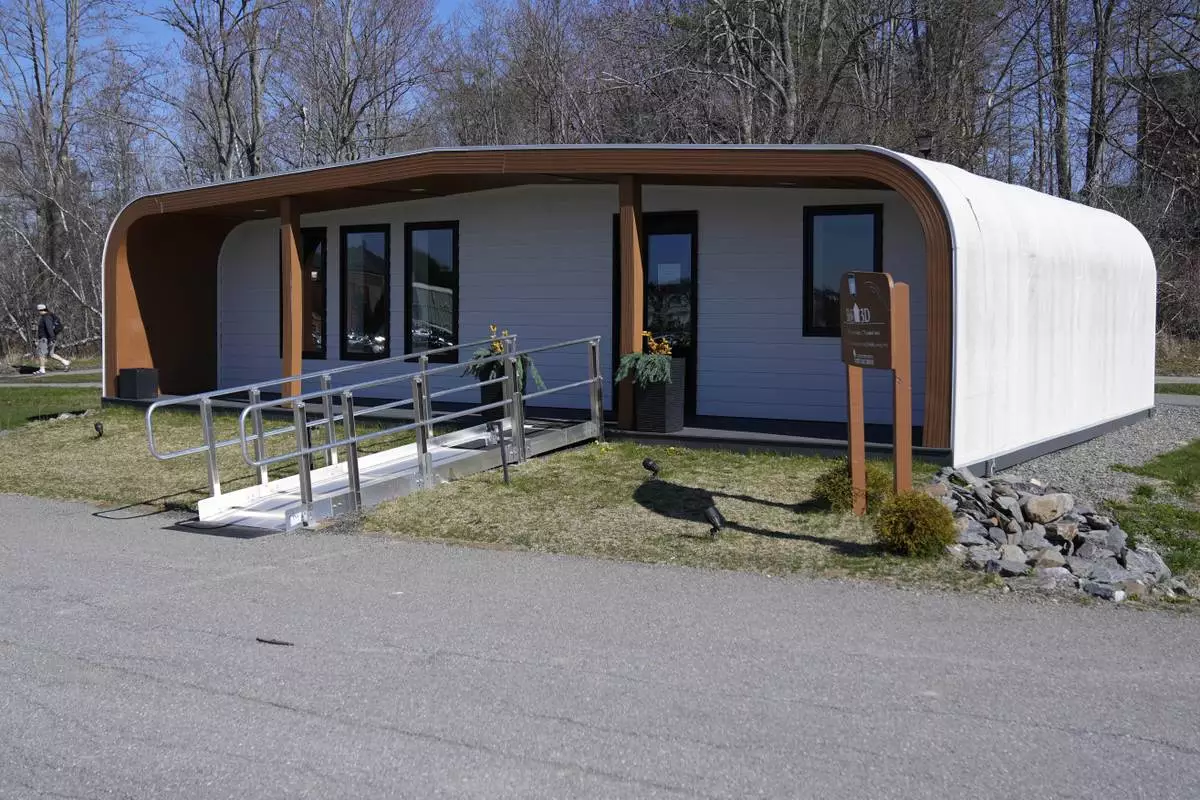
The BioHome3D is seen Tuesday, April 23, 2024, at the University of Maine, in Orono, Maine. The 600-square-foot single-family home was made by UMaine's original 3D printer in 2019. (AP Photo/Robert F. Bukaty)
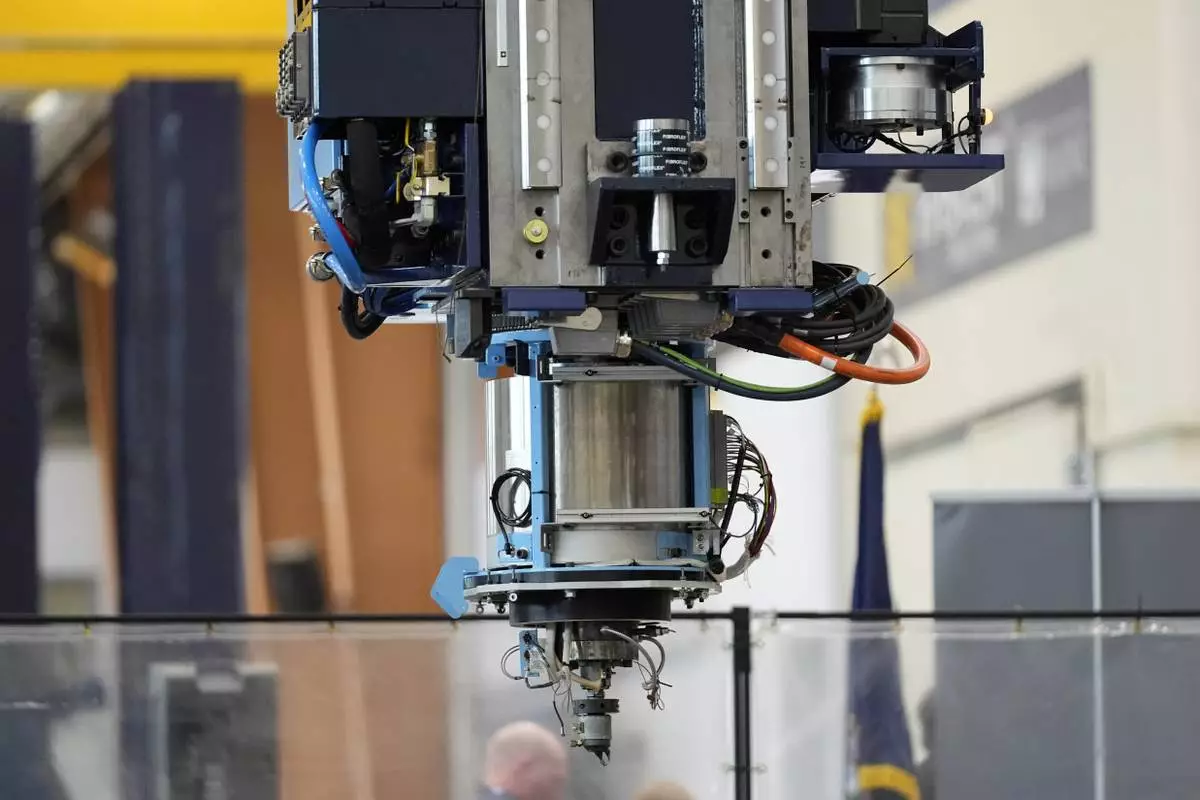
The world's largest 3D printer is seen Tuesday, April 23, 2024, at the University of Maine, in Orono, Maine. (AP Photo/Robert F. Bukaty)
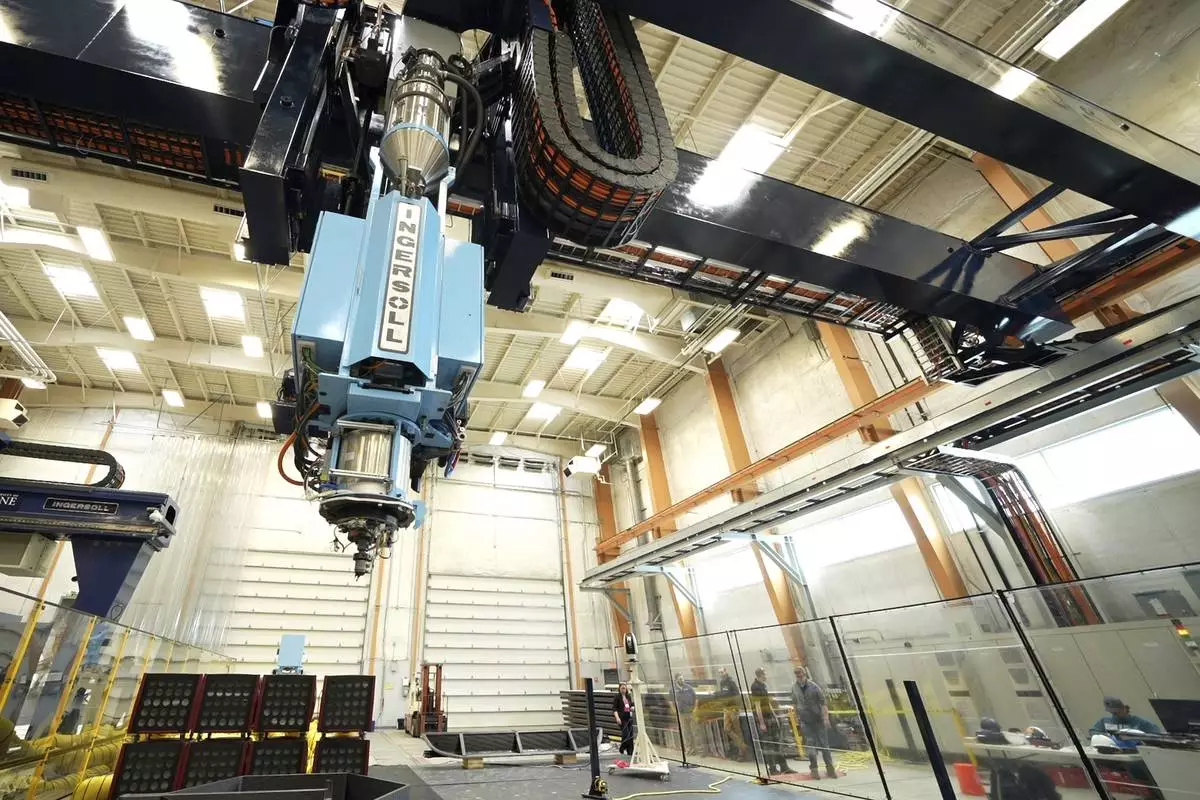
The world's largest 3D printer is seen Tuesday, April 23, 2024, at the University of Maine, in Orono, Maine. (AP Photo/Robert F. Bukaty)
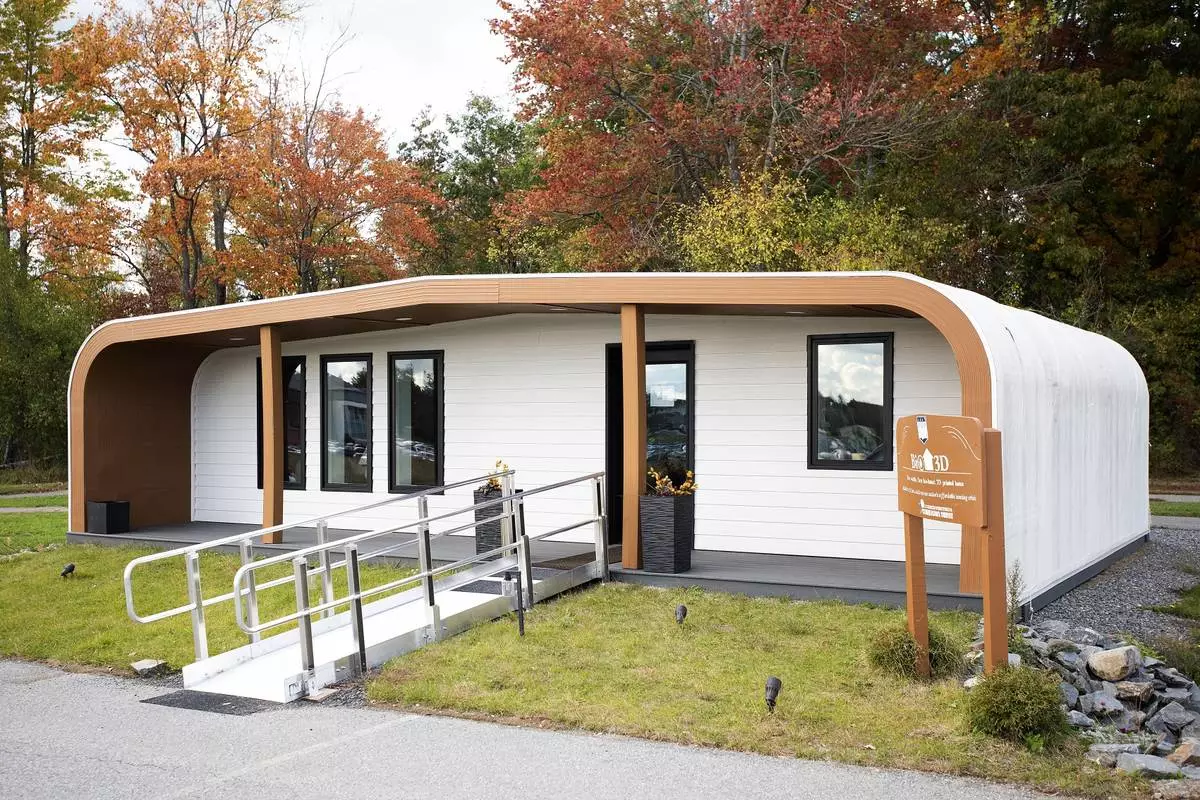
The University of Maine's first 3D printed home sits on Oct. 12, 2023, in Orono, Maine. The printer that created the house can cut construction time and labor. An even larger printer unveiled on Tuesday, April 23, 2024, may one day create entire neighborhoods. (AP Photo/Kevin Bennett)

A cross section of an exterior wall of a house is being printed on a 3D printer at the University of Maine's Advanced Structures & Composite Center on Oct. 12, 2023, in Orono, Maine. An even larger printer unveiled on Tuesday, April 23, 2024, may one day create entire neighborhoods. (AP Photo/Kevin Bennett)
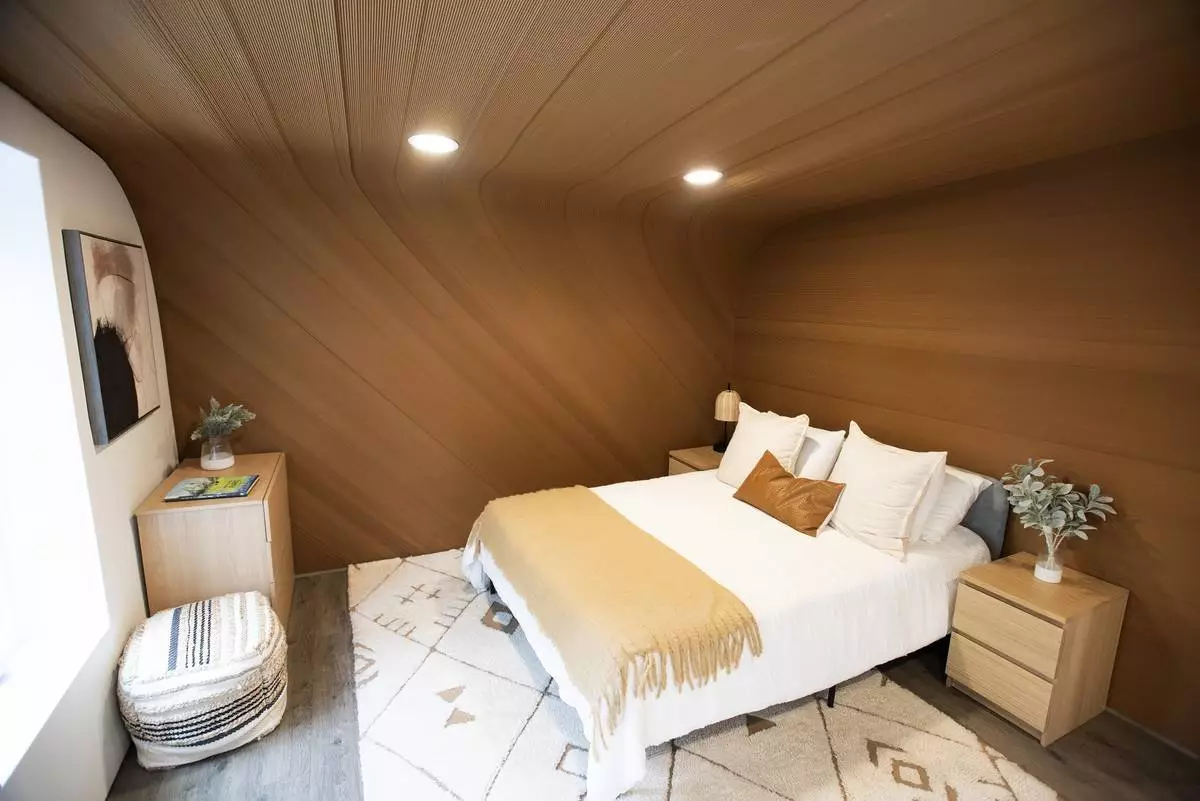
A bed sits inside the University of Maine's first 3D printed home on Oct. 12, 2023, in Orono, Maine. The printer that created the house can cut construction time and labor. An even larger printer unveiled on Tuesday, April 23, 2024, may one day create entire neighborhoods. (AP Photo/Kevin Bennett)
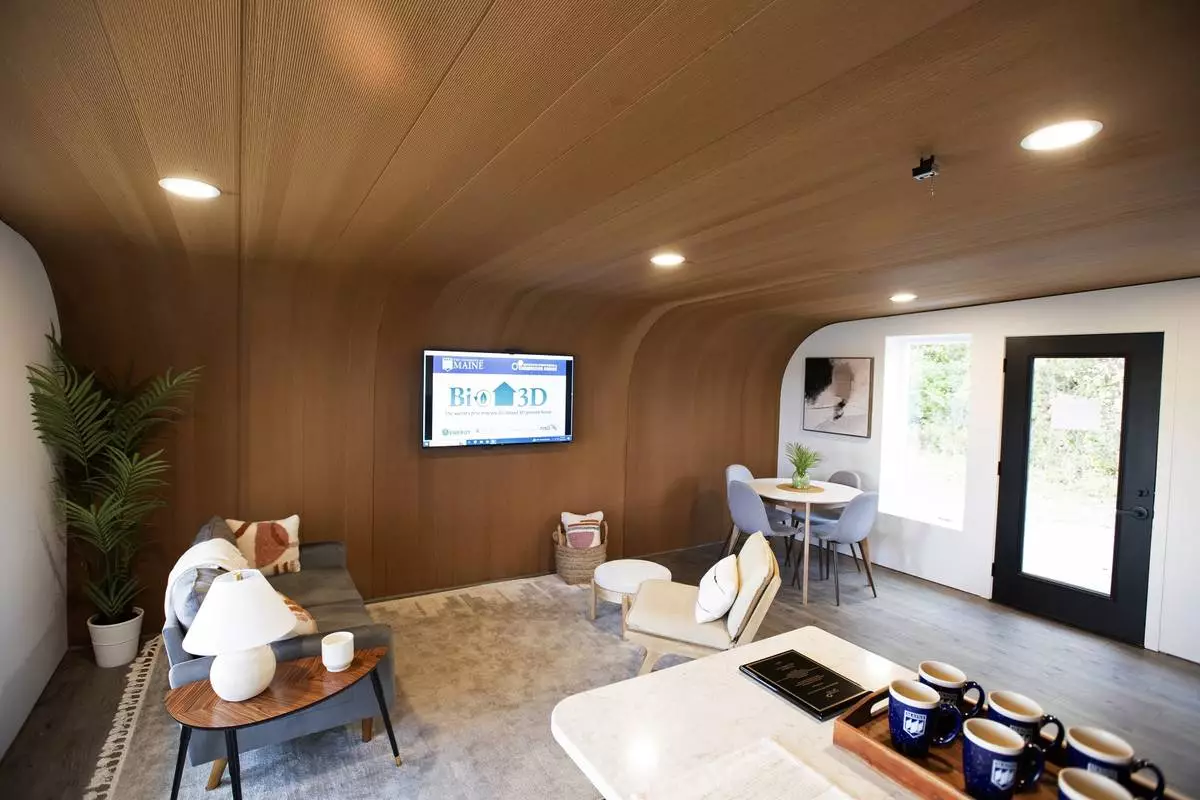
The inside of the University of Maine's first 3D printed home is visible on Oct. 12, 2023, in Orono, Maine. The printer that created the house can cut construction time and labor. An even larger printer unveiled on Tuesday, April 23, 2024, may one day create entire neighborhoods. (AP Photo/Kevin Bennett)





















